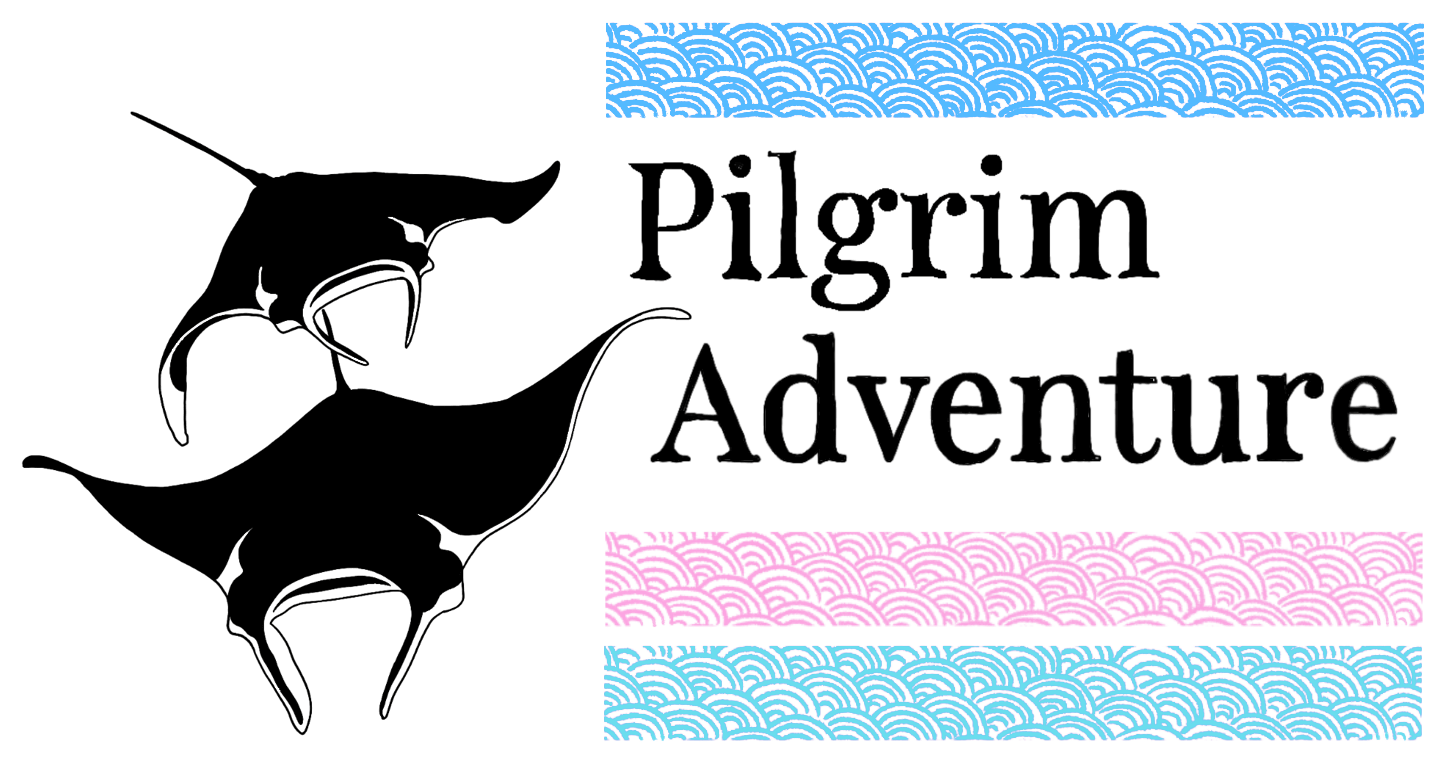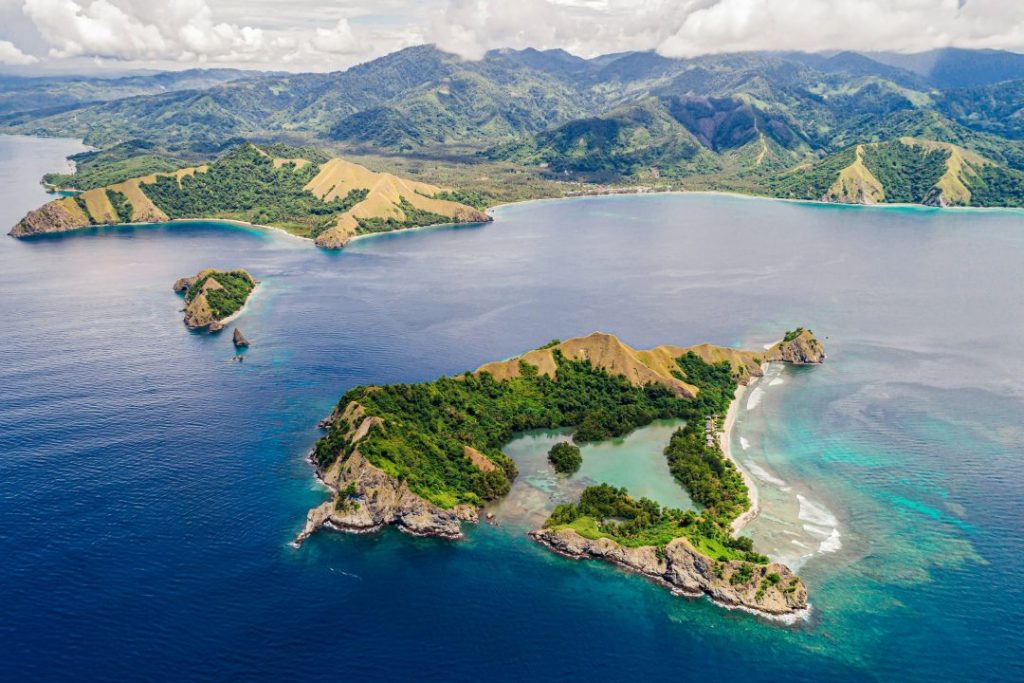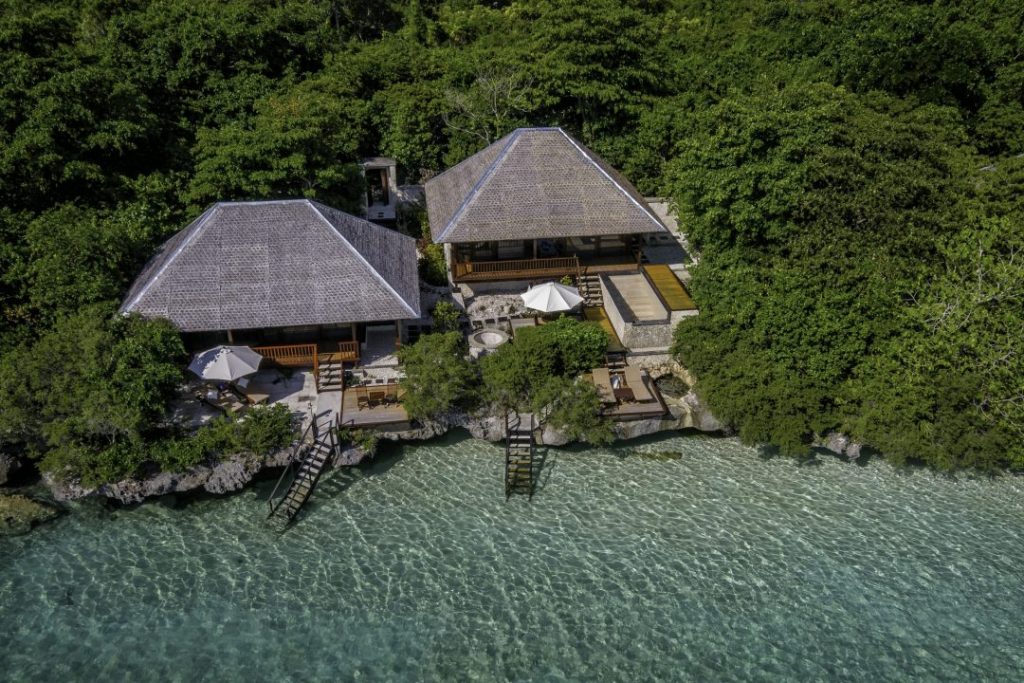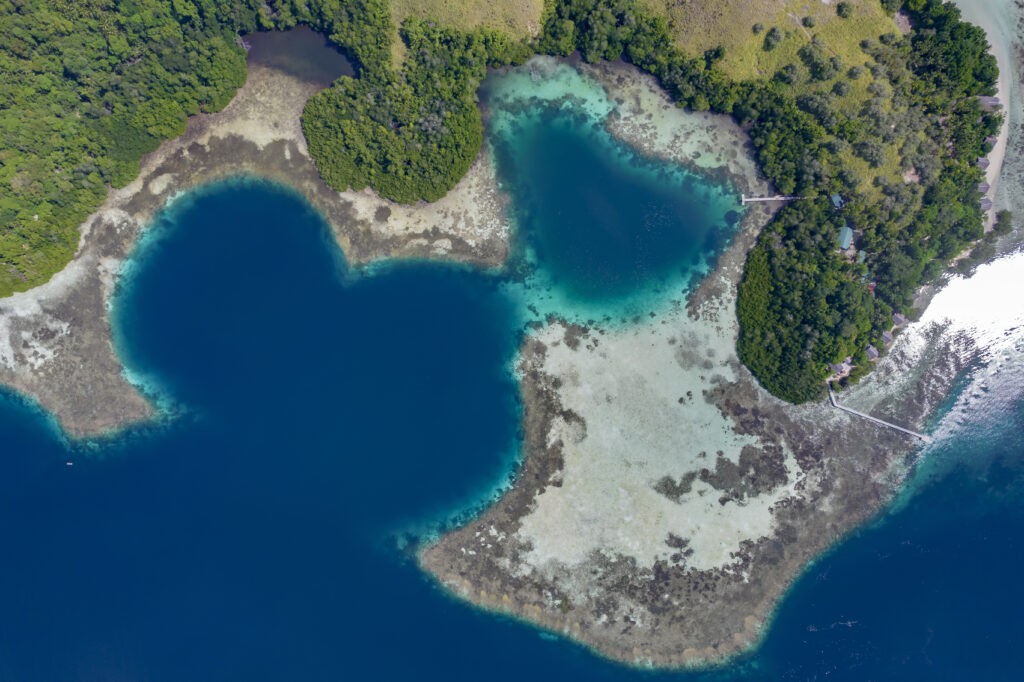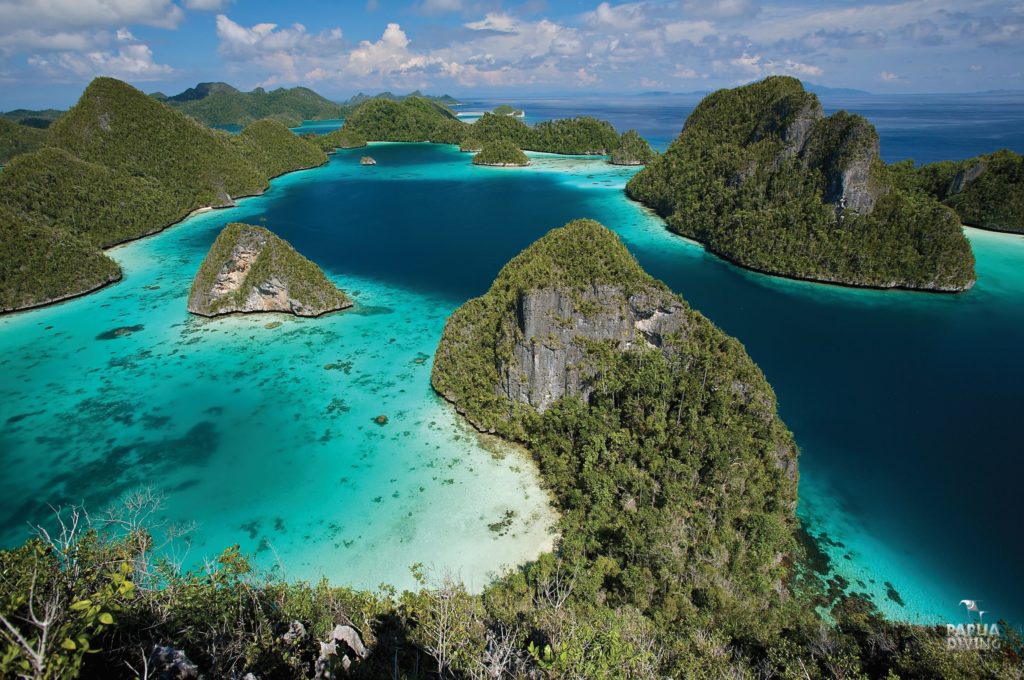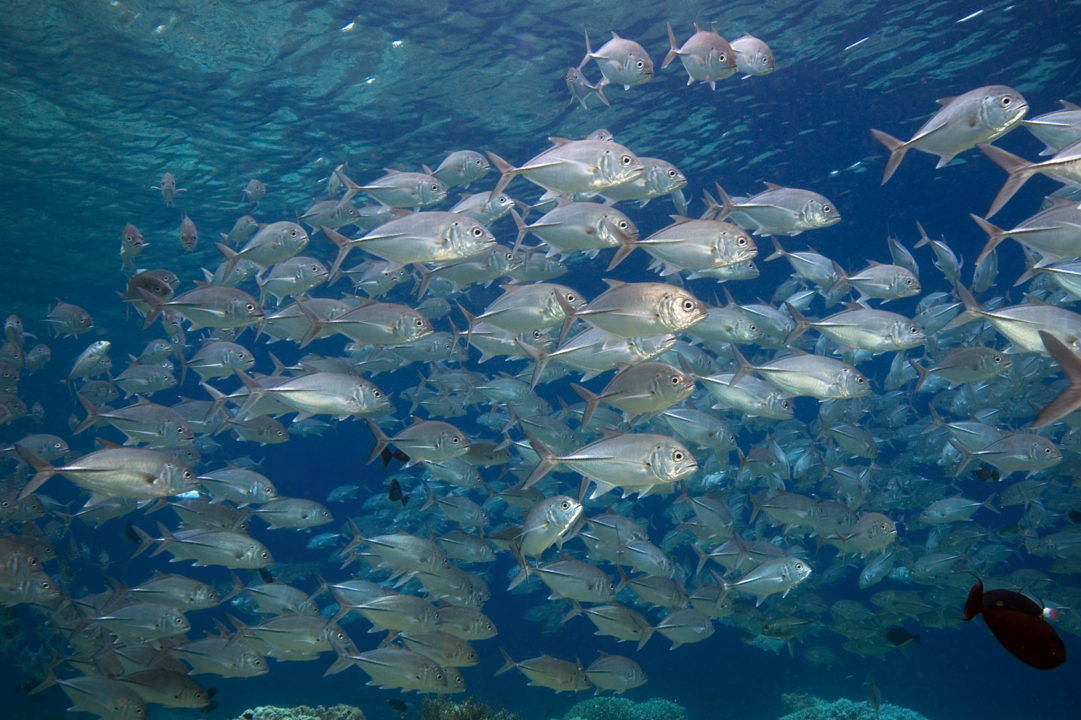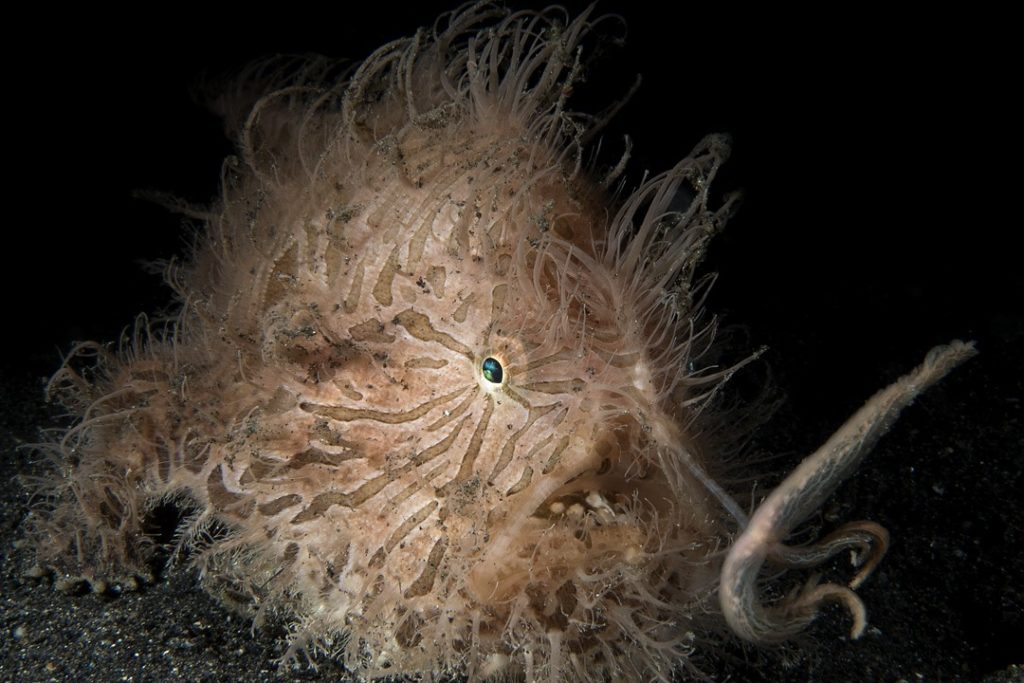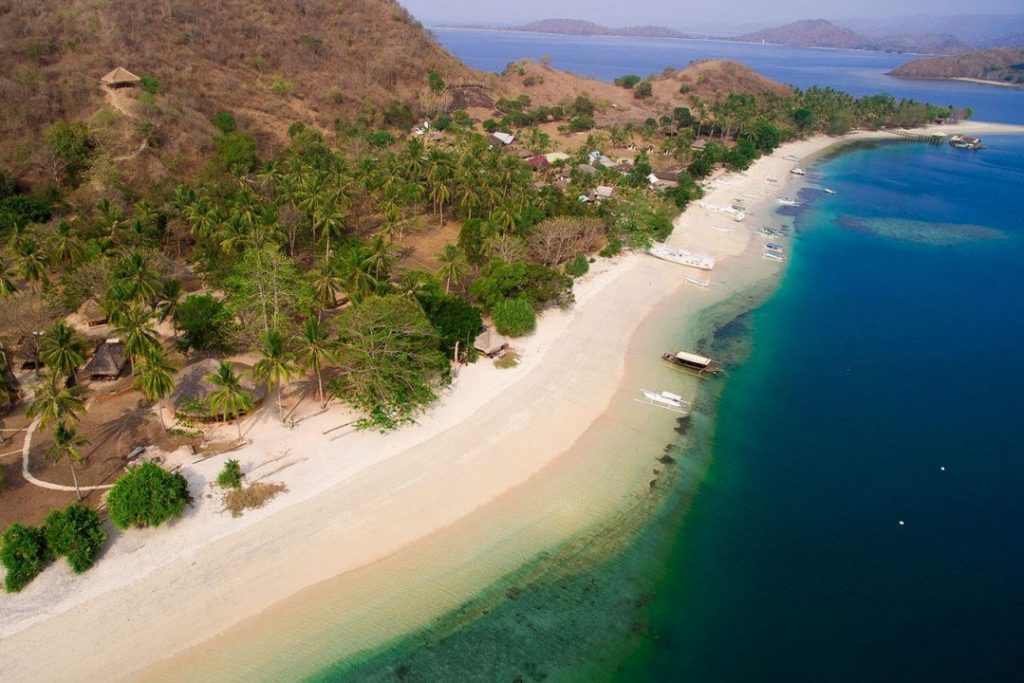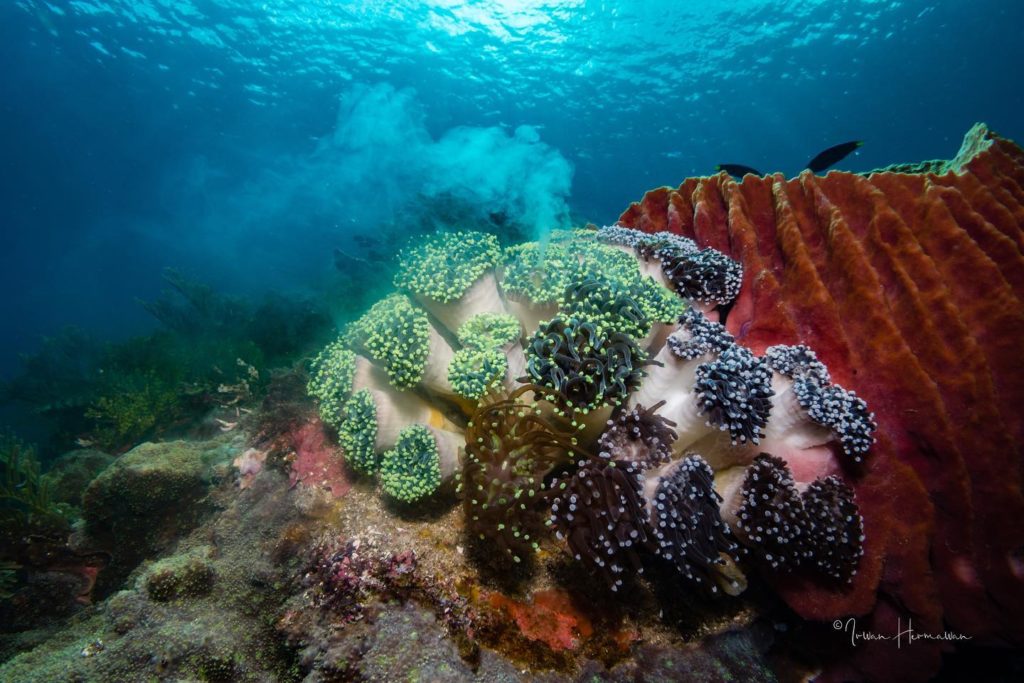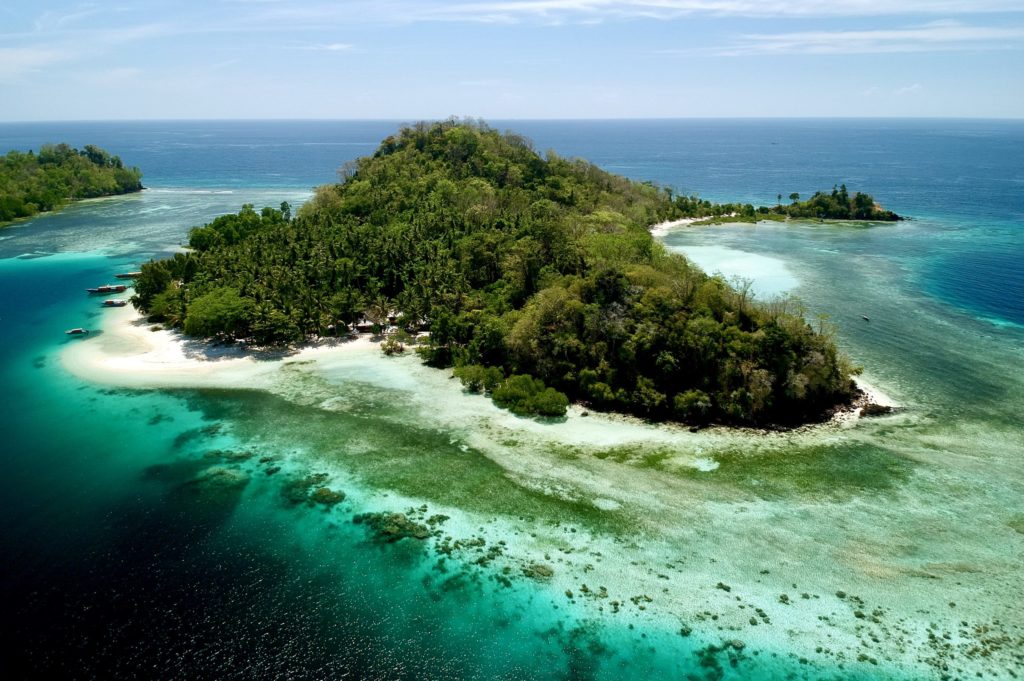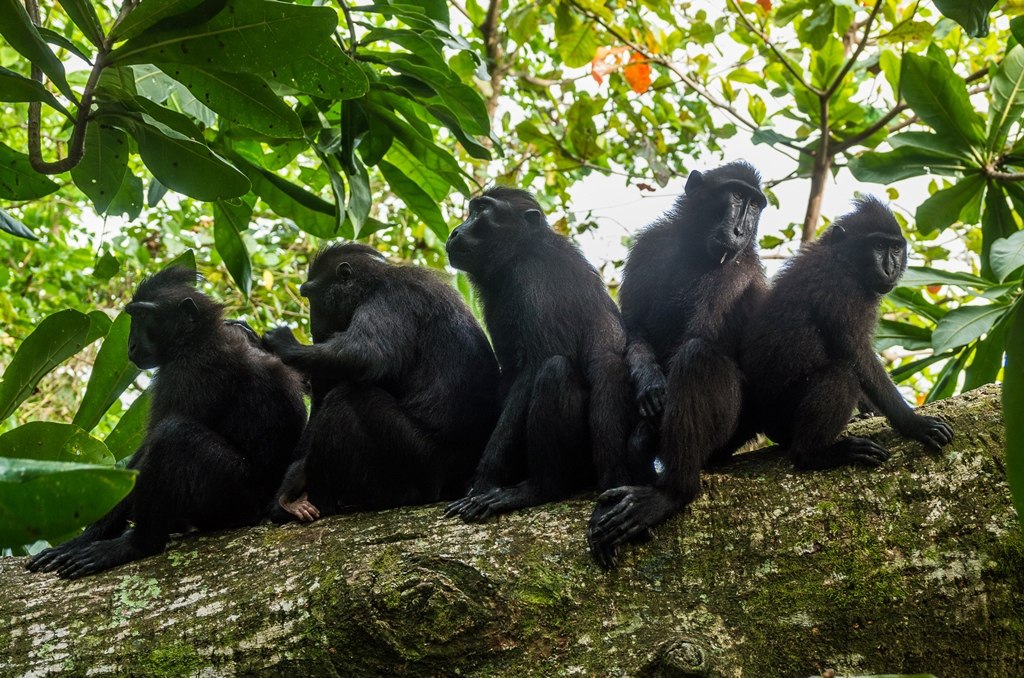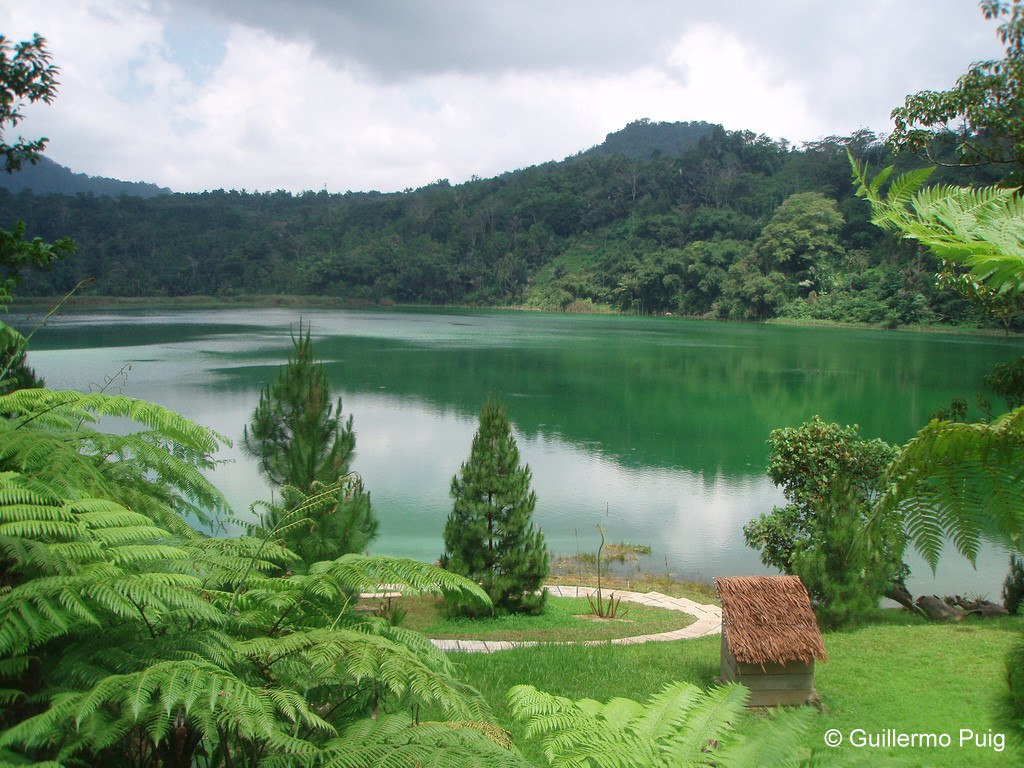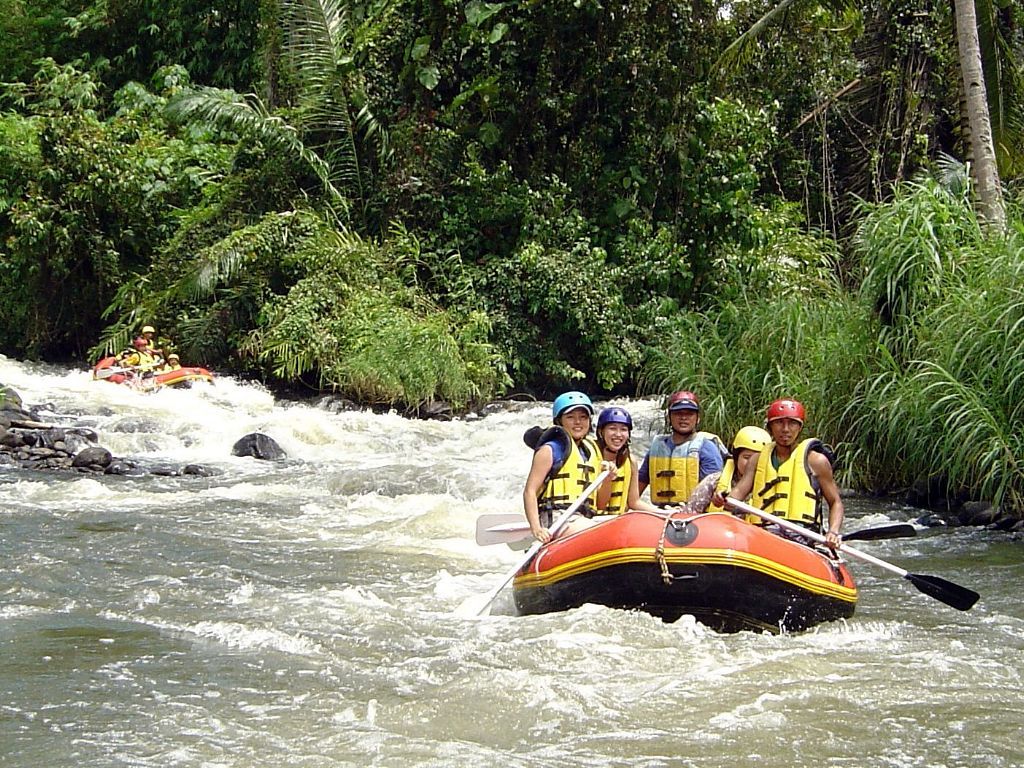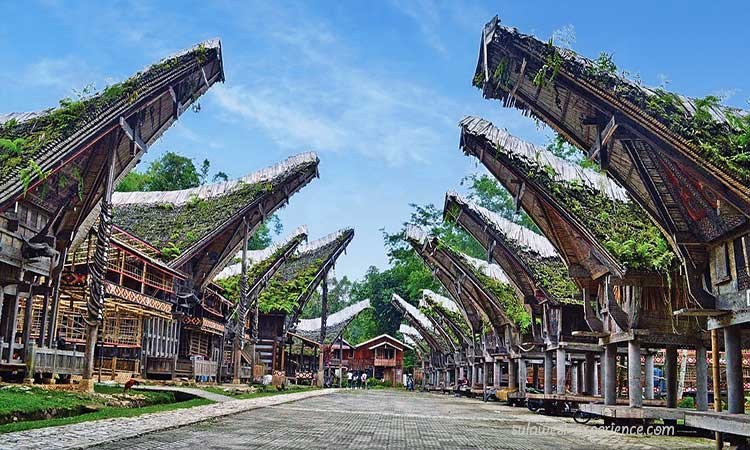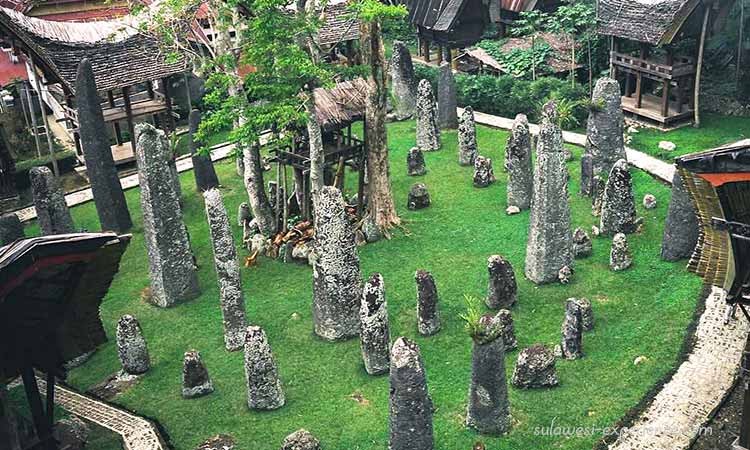Central Sulawesi - Tompotika
- October to April
- DIN & Yoke
- Diving
- Nitrox
- Courses
- Snorkeling
- 15+ Days
Nestled within a heartwarming view of greenery-filled mountains and untouched nature. Tompotika is a place where the sky meets the sea. The underwater landscape is remarkably pristine with ridges with complex topography, deep canyons and valleys, huge sponges and the most amazing hillsides of huge sea fans. Exceptional muck dives and splendid reef dives. Diving connoisseurs and photographers – both wide angle and macro will find delight in the Underwater Kingdom here.
Central Sulawesi - Tompotika
October to April
15 Days From € 2600 / Person
16 Dives From € 800
(Based on double occupancy)
(All Flights Included)
Tompotika
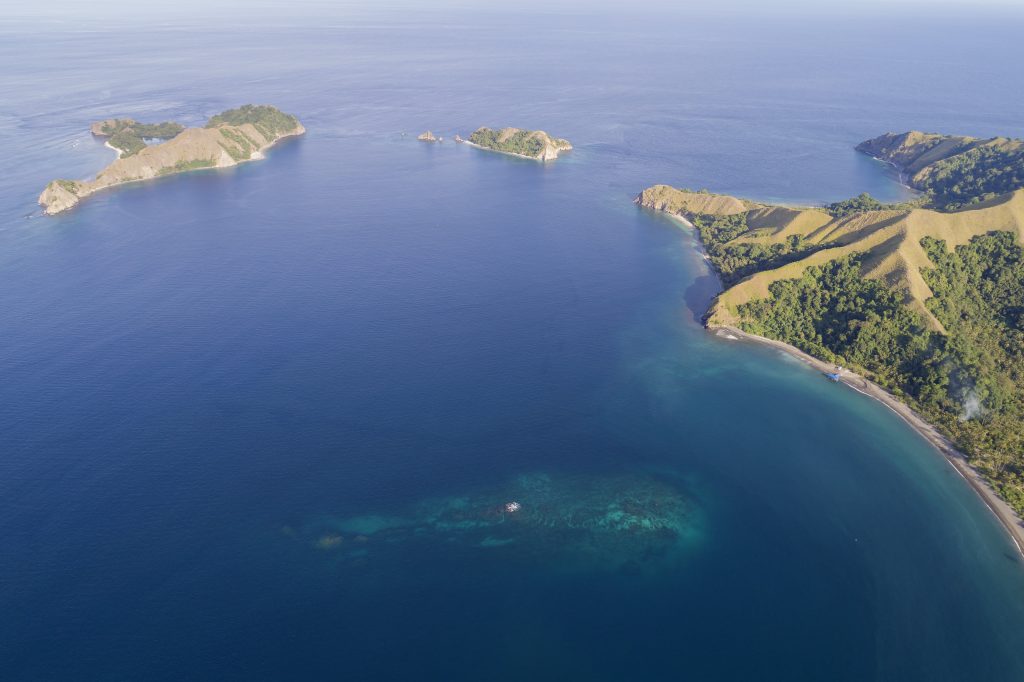
Surrounding Area
Explore the local farming by visiting a clove plantation. In the area, coconuts, cloves, chocolate, honey are amongst the most important resources. Discover the importance of these plantations in the local life and enjoy the green surroundings.
Or what about to come back with a nice experience and memory. Meet with a local family and learn how to prepare a local dish.
Explore the village and the surroundings with our bicycles on the road or across the coconuts plantations. Or visit the lonely beaches with our kayaks, this is all free !
A Maleo Bird sanctuary is located on a beautiful beach about 20 kms North from the resort. (The Maleo is an endemic bird of Sulawesi). It can be accessed by road or by boat; the visit should take place in the morning to observe the birds digging their nesting holes in the sand.
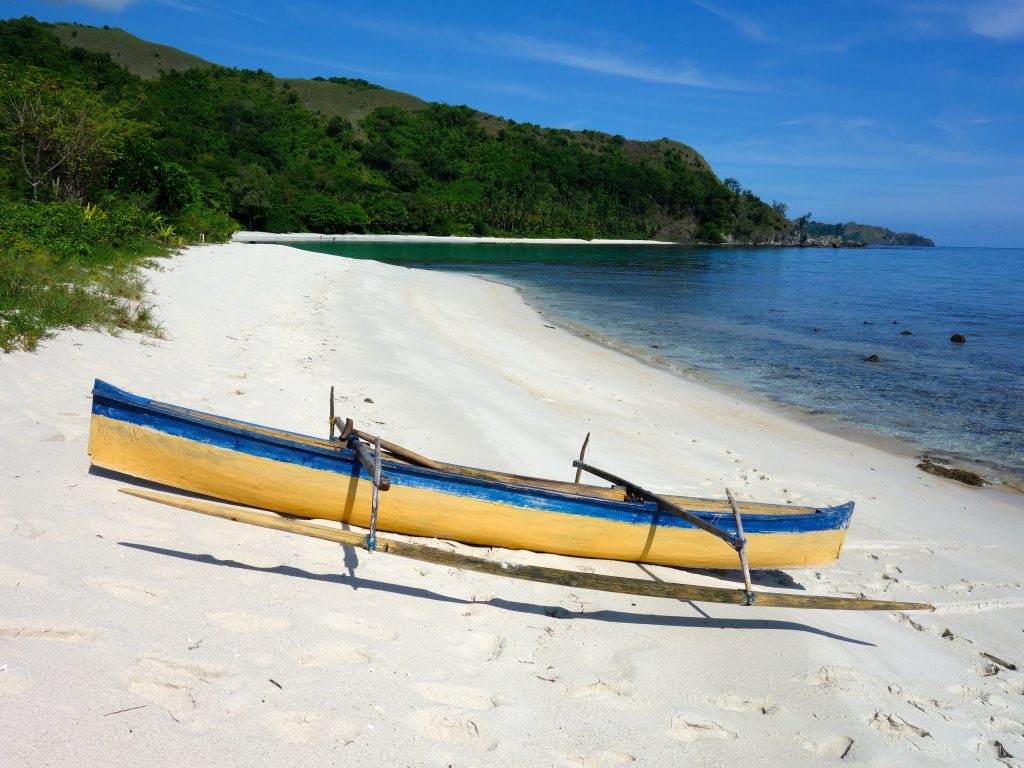
Conservation
Conservation of the area is very important. That is why Tompotika Dive Lodge decided to build the bungalows within the village, so you have the opportunity to see the villager’s day to day activity and interact as well.
A fee included in the rates supports the conservation program which partly funds the expenses of the boat patrol around the dive sites and provides necessary support to the villagers.
The vision is to help the area reach a legal status from the government which is “KKLD” Kawasan Konservasi Laut Daerah or protected coastal area.
The dive lodge works together with Alto (Alliance for Tompotika Conservation), an NGO dedicated to the protection of the Maleo birds in the area since 2006. And also they have a conservation project for protection of the turtle eggs on the beaches!
Maleo Bird reserve is located on a beach about 20 km away from the resort which can be accessed by boat or by road. The best time to see them is during the morning. This very special bird lives in the forest and comes to the beach to lay eggs on the very same beach they were hatched, digging big holes in the sand that will ensure a constant temperature for the incubation of the eggs.
The hatchling will dig themselves out of the sand and fly away in to the forest, until it is time for them to return and repeat their life cycle. If you like birds, you can also see many interesting species on the trees surrounding the brackish water lagoon only a few km away from the resort.
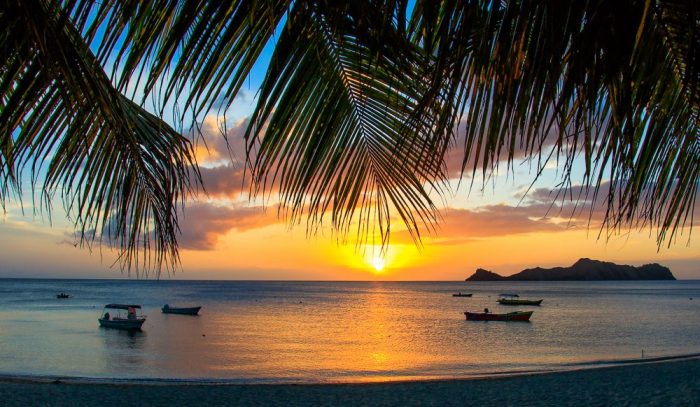
Overview
The area of northern Sulawesi lies within the Coral Triangle. This includes Gorontalo. The marine environment here boasts the highest marine biodiversity on the planet. The Baggai Regency makes for an abundance of thriving coral life, macro and big schools of fish. This is a rare place left on this earth.
The prosperous fish life is a direct consequence of the water’s richness, especially the abundance in plankton, which might sometimes limit the visibility. On average, the visibility range lies between 10 to 15 meters. However, this number can vary and sometimes be up to 20 meters.
Most of the dive sites are just 10 to 15 minutes boat ride away from the resort, the most distant being at around 30 minutes away. Each boat carries 4 divers, along with their dive guides.
On the sandy slopes or fringing reefs of the coastline, muck dives uncover the micro fauna and creatures which make the Sulawesi’s reputation, such as frogfishes, ghost pipefishes, mimic octopuses, blue ring octopuses and much more. On the beach right in front of the bungalows, a black sand slope is one of the best muck dives around and is free of access as many times as you wish.
Most of the the other dive sites are sumbmerged ridges and rocks that offer a great variety and density of fish with lots of different schools and pelagics: school of surgeon fishes, trevallies, barracudas, giant trevallies and tuna reef sharks hunting. Eagle and manta rays can also be seen on different occasions.
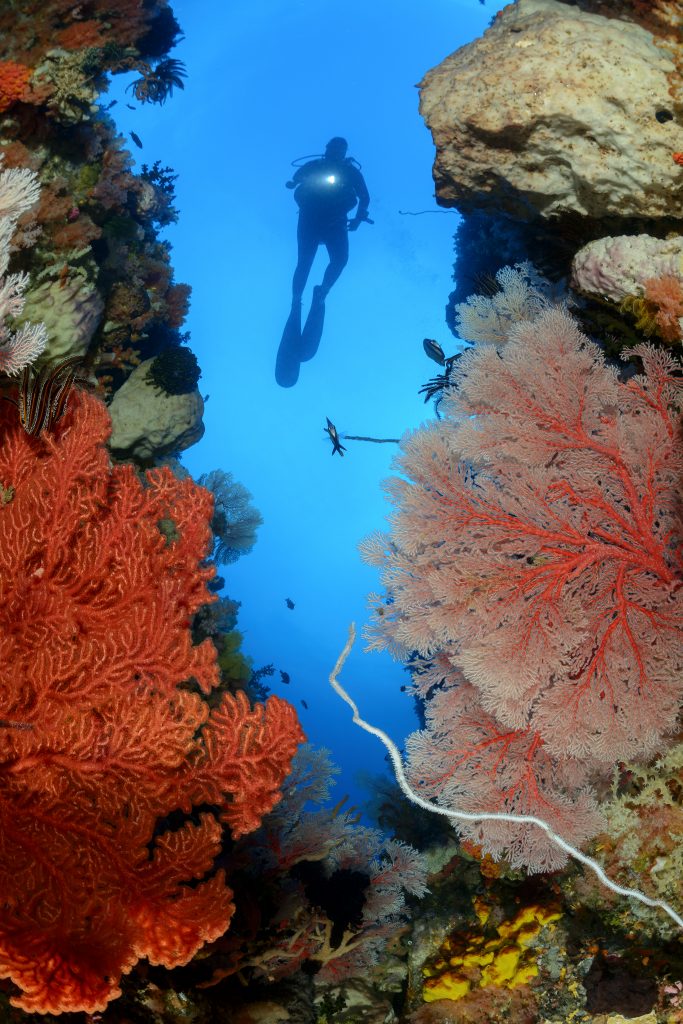
Favourite Dive Sites
In an area full of spectacular dive sites, here is our favorites! Coliina Slope: Just in front of the bungalows on the village beach. Actually there are at least 2 sites as the beach is very wide. Black sand, muck dives. You can find frogfish, hairy frogfish, various kinds of octopus (coconut, wonderpus), flamboyant cuttlefish, ghost pipe fish, crabs, etc.
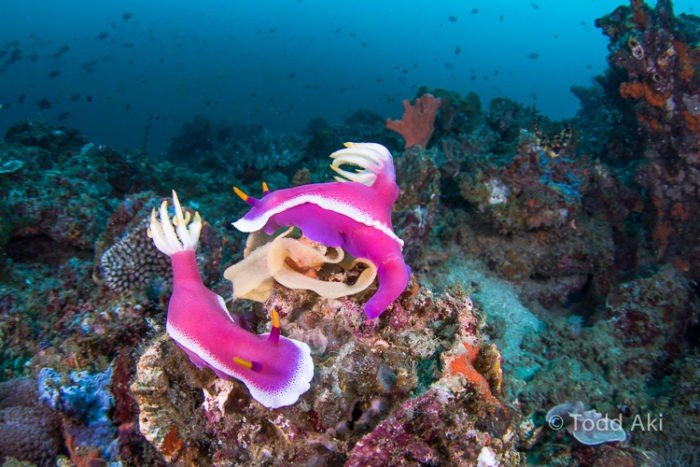
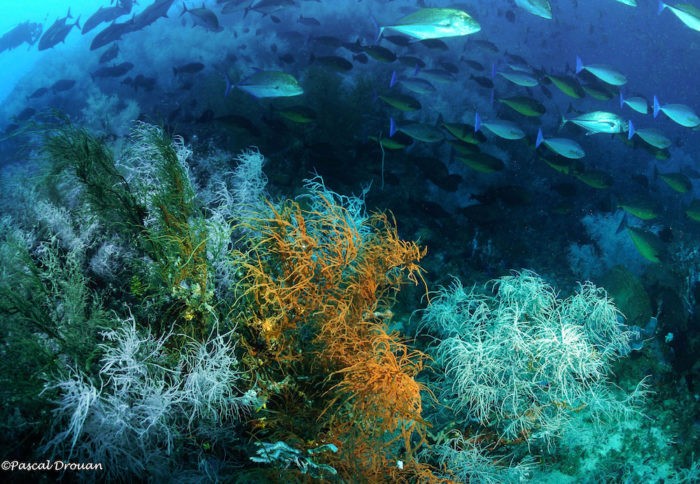
Coliina Rock: Reef , 15 to 20 meters deep, slope and boulders, good fish life, fusillers, groupers, reef sharks. Strong currents.
Ali Baba: One of our emblematic dive sites. Maximum depth 25 meters. Rocks and sand. Topography and coral arrangement form a superb garden. Two big boulders on a 27-meter sandy bottom with gorgonians, tubastrea corals and glass fish visited by schools of surgeons and oriental sweetlips. Many gorgonians on the sand with pigmy sea horses. Juvenile wrasses. Crocodile fish, sweetlips, surgeons, solitary barracudas, glass fish, groupers, barramundi cods.
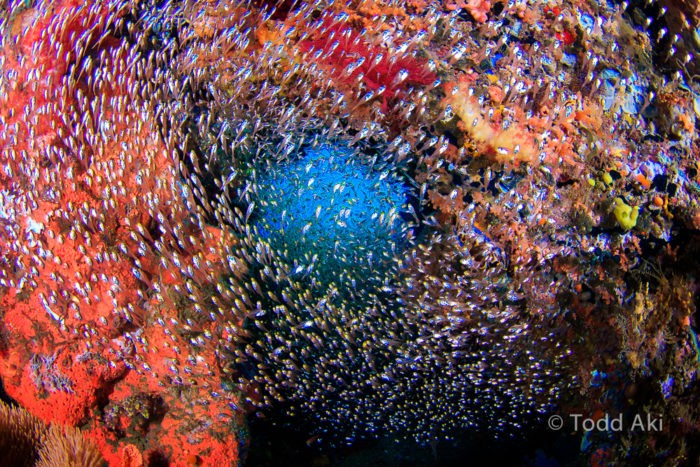

Batu Gong: This fantastic dive site is formed of 2 large ridges with a top at 13 meters, and bottom at 35 meters. The site is marked with a buoy and we installed a line to facilitate entry and descent. Black coral forests and soft corals. Very high density of fishes: Schools of trevallies, giant trevallies, tunas, barracudas, oriental sweetlips, lot of banner fish, grey reef sharks, white tip sharks, eagle ray, occasional manta ray, turtles. This dive is subject to currents.
Entre 2 Mers: Many rocks and boulders on a sandy bottom from 20 to 7 meters. Due to strong currents this dive can only be performed during slack tides. Beautiful topography and colourful soft corals in canyons with overhangs and caves. Macro subjects as Zanzibar shrimps, pygmy sea horses and rare nudibranchs. Sweetlips, barramundi cods, fusiliers, groupers.
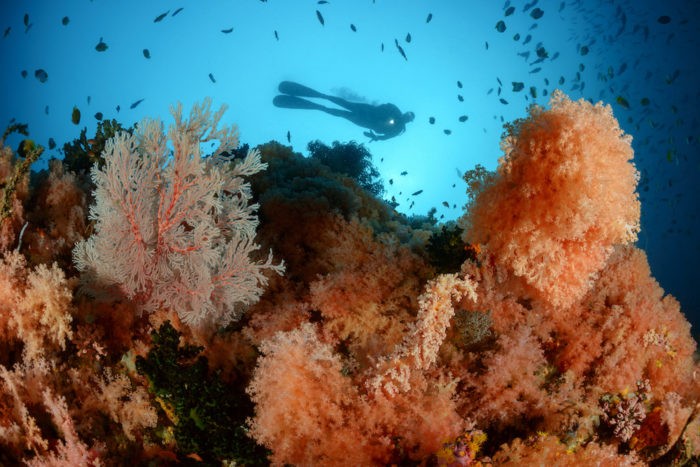
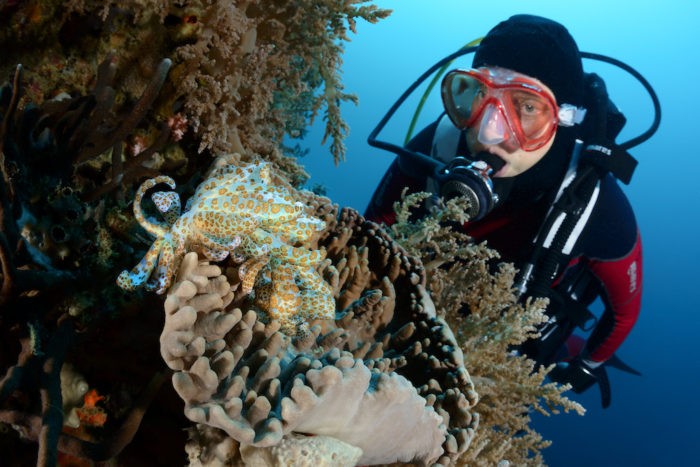
Tanduk: A world class dive site, with ridge, Big rocks and boulders on a sandy bottom from 20 to 30 meters. Beautiful topography, huge gorgonians, soft corals, tubastrea. The dive is full of life with anthias, big schools of surgeons fish and trevallies, banner fish, eagle ray, occasional tunas and manta rays. This dive is subject to currents.
Solan Reef: An underwater ridge with a top at 5 meters. On the east side it forms a wall, with lot of fishes. Schools of rainbow runners, surgeon fish, oceanic triggerfish, ocasional tunas passing by, white and grey reef sharks, eagle rays. lobsters. pigmy sea horses, nudibranchs and ghost pipe fish.
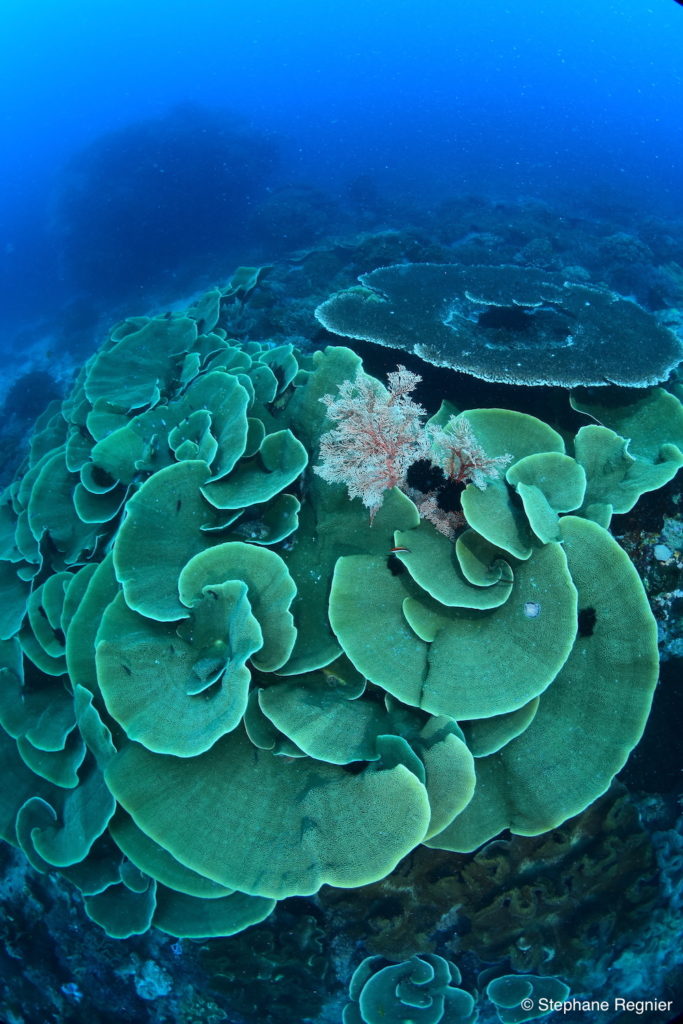
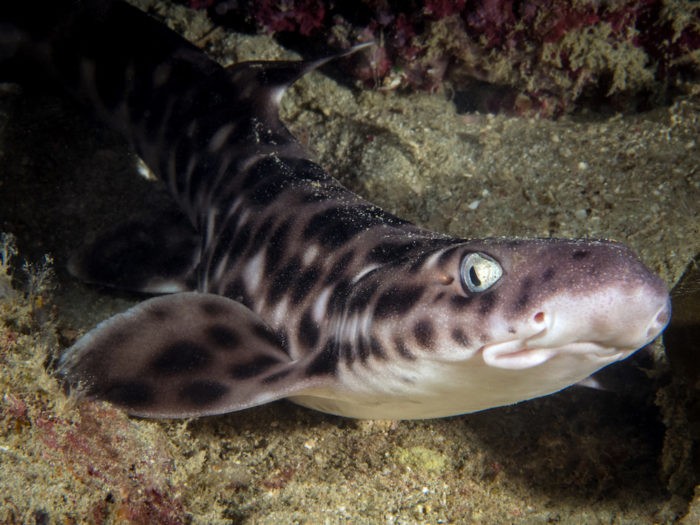
Batu Tetek: A set of ridges on a west-east axis, with a small part emerging. Otherwise the top is at 6 meters. Subject to currents so we always try to dive it during slack tides. Wall and slope on both sides of the ridge, wip corals and tubastrea. Max depth 35 meters. Schools of Surgeon fish, barracudas, trevallies, thunas, napoleon wrasses, banner fish etc.. Grey reef sharks, eagle rays and more!
Batu Tetek Dua: Corresponds to the part of the ridge between the emerged rock and the coast. The ridge is discontinuous, cut by several beautiful canyons. Schools of sweetlips, eagle rays, tunas. Macro subjects too.
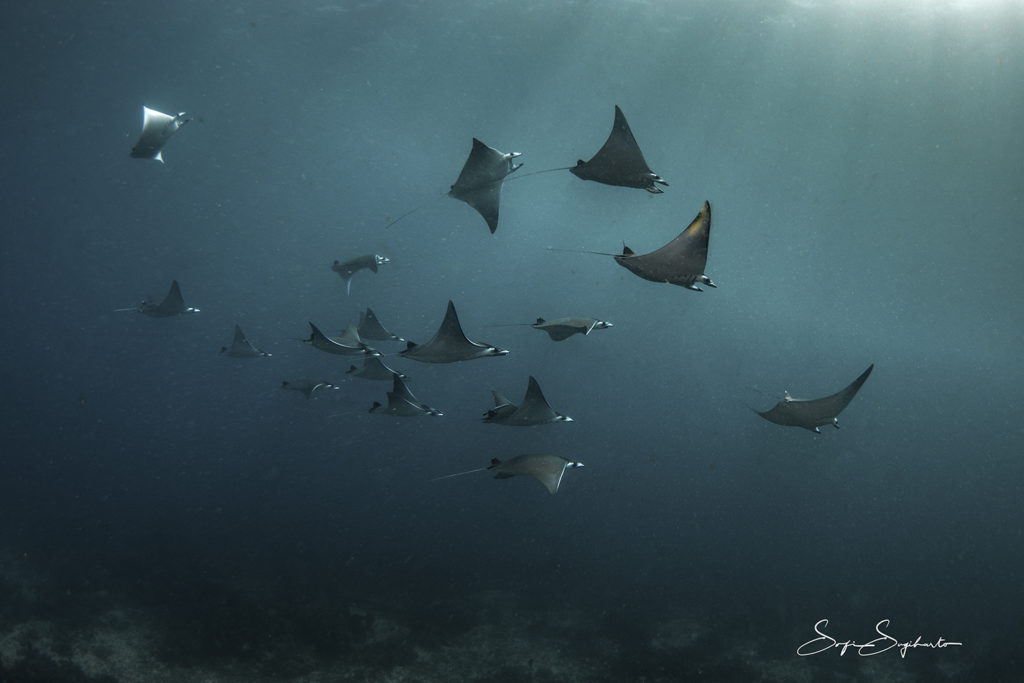
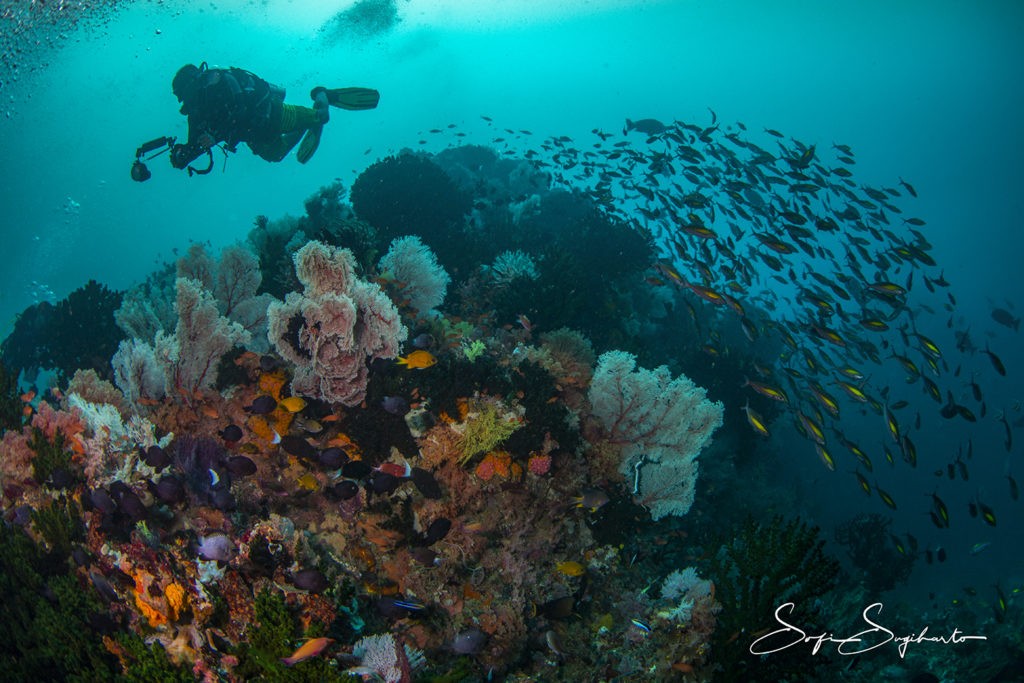
Batu Dalam: Only for the very experienced diver, this ridge has a top at 30 meters. Great fish life with many grey reef sharks and white tip reef sharks.
Ondolean Rock: At the entrance of Ondolean bay, there is a large rock with the top emerging. A beautiful dive site with soft and hard corals. A canyon with colorful soft corals split the rocks in two. Nice macro subjects including nudibranchs and flatworms, Ruban eels, pigmy sea horses, orangoutan crabs, scorpionfish, frogfish, leaffish etc.
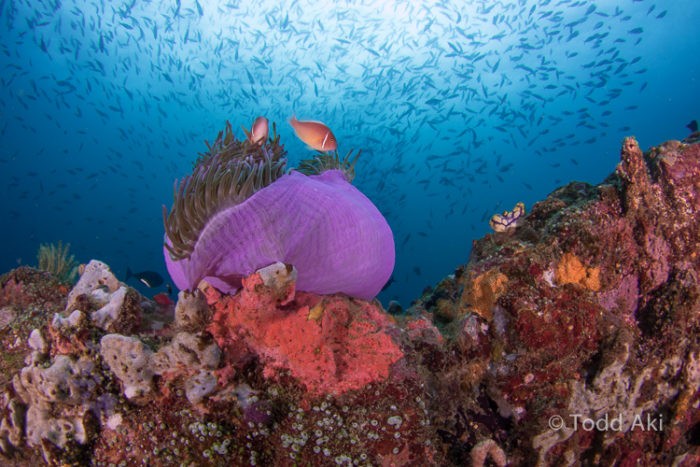
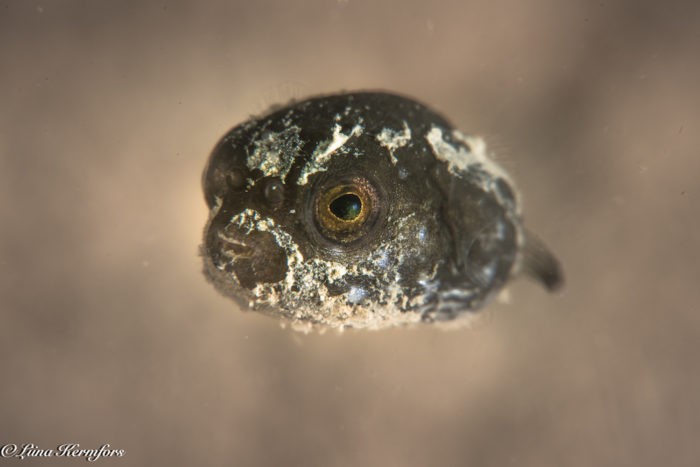
Rock & Wreck: Big boulders on a sandy bottom from 12 to 30 meters. At 10 meters there are the remains of a small steel boat wreck. Beautiful topography with soft corals and gorgonians, Anthias, bumphead parrotfishes, barracudas, barramundi cods, groupers. Ruban eels, nudibranchs, pigmy, crabs and shrimps.
Season
Dive season at Tompotika runs from October to May. During this time, seas are typically calm and blue. Light afternoon showers make for enjoyable, balmy nights.
Ocean temperatures amongst Sulawesi dive locations vary. Waters at Tompotika are quite warm. Typical temperatures measure between 28 – 30 degrees Celsius (82 – 86 F). But can sometimes drop to 25 degrees if cold upwellings occur. A 3 to 5 mm wet suit is recommended depending on your preferences.
Between December and March there could be swell, making the housereef inaccessable for a few days.
Remember that the water here is very rich in nutrients, meaning visibility of 10 to 15 meters can occur – but this gives a thriving marine life!
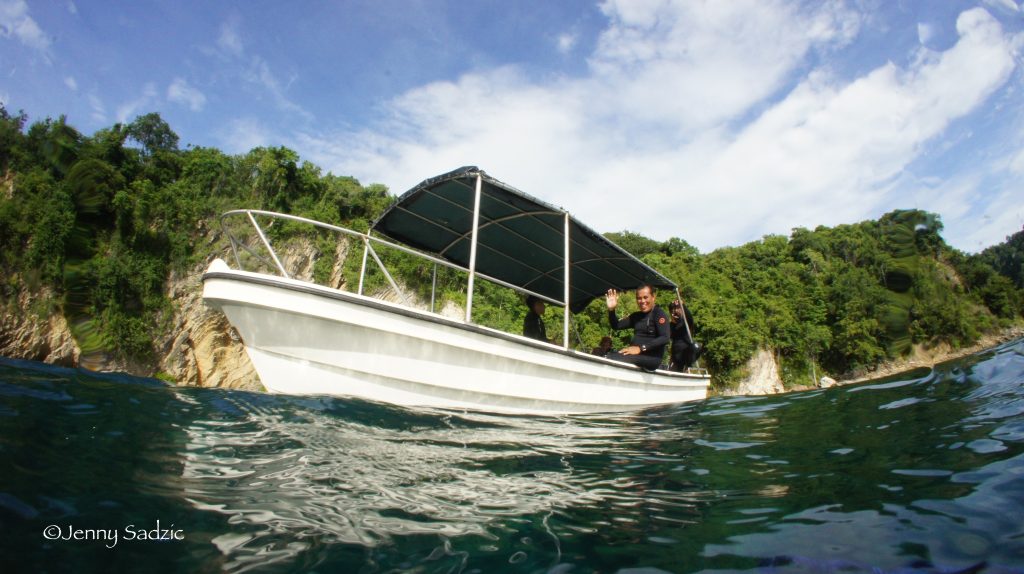
Included
Included
- International Flights
- Domestic flights to & from Luwuk / 20 kg’s checked baggage included
- Airport pick-up by private car (Denpasar, Manado or Jakarta International Airports)
- Car transfers to & from Tompotika in Central Sulawesi
- 2 nights in a 4* hotel w/ breakfast
- 10 nights in Tompotika Dive Lodge w/ fullboard & free mineral water + hot water for tea/coffee
- *Fee to Rejsegarantifonden
- Full package tour – See the benefits of being covered by the Full Package Act and Regulations here
*A Danish Travel Guarantee Fund covering all European citizens in case of bankruptcy: link
Not Included
- “Visa On Arrival” ~ €30
- Tips for the staff
- Airport departure tax ~ €10
- Personal Travel Insurances
- Dive Packages
- Anything not listed in “Included”
A Domestic Flight or Along the Way:
Kaimana
Triton Bay
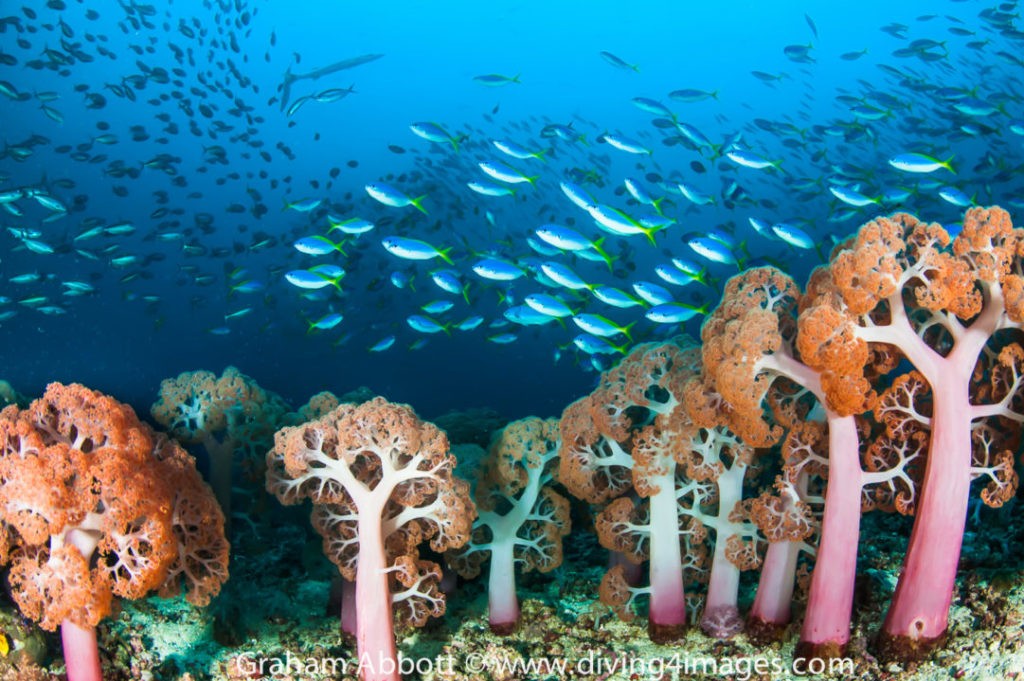
Remote and worth it! Whale sharks and soft corals in the heart of the Coral Triangle. Two domestic flights away, but…!
Raja Ampat
Pulau Batanta
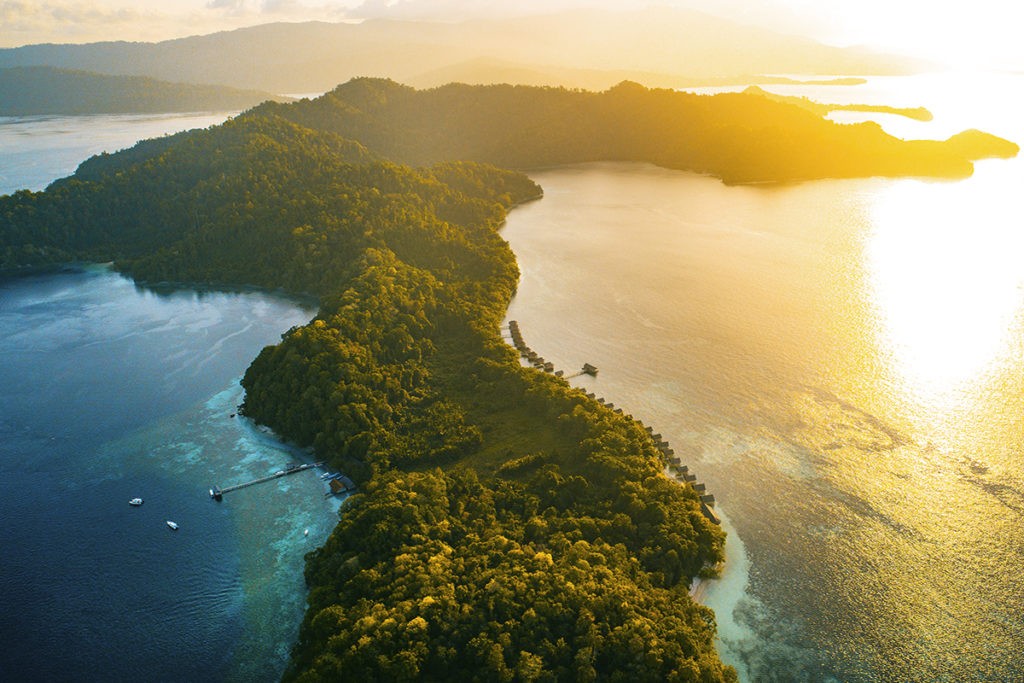
Explore frontier diving in Central Raja Ampat! Mantas, macro & waterfalls. Two domestic flights away. One domestic flight.
Via Manado / North Sulawesi:
Easy to read, only 2 hours drive from Manado. Located at the foot of Dua Saudara Mountain, the Tangkoko Nature Reserve is comprised of rolling hills and valleys with a variety of hardwood trees and unusual plant life. The animal life is also quite varied, and one can often view Tarsius tarsier (one of the smallest known primates), black tailless monkeys, snakes, spiders and kuskus (marsupials). Tangkoko Batuangus Reserve offers a suitable protective environment to help prevent these animals from becoming extinct.
Only one hour away from Tangkoko Nature Reserve (on the way) is Tasikoki Wildlife Rescue and Education Centre (www.tasikoki.org). Here you can observe many unique species from Indonesia, as well as several endemic to Sulawesi. All animals have been rescued from the illegal wildlife trade. When taking a tour of the centre (1.5 hours) you will learn about conservation of wildlife and nature as well as the rampant wildlife trade. After visiting the animals you can enjoy a vegetarian meal (with fish) together with the staff as well as the many volunteers from all over the world.
Price: $45/person as add-on only to a Tangkoko Nature Reserve trip.
Visit the Vihara Buddhayana (Buddhist Temple) near Gardenia Country Inn, then heading for the small village of Woloan, where you can see the Minahasan Style Houses being built, knock down style, ready for delivery or shipping. Then continue to the base of Mount Mahawu where we begin the 1-hour trek to the crater’s edge. From that vantage point we can see Bunaken & Manado Tua Islands, as well as the bay of Manado. At the bottom of the crater, one can observe a steaming lake and experience the smell of sulfur from the pools.
Then it’s off to see the traditional food & flower market in Tomohon, surprises in store for you!
You will have lunch at Tondano Lake, close to the goldfish farm, where you will enjoy the serenity of the lake. Then we travel to Pulutan Village, a cottage industry for making pottery or choose the Toraget Hot Springs. At the weaving factories you can observe the local weaving traditions being practiced. Last stop is Lake Linow (the changing color lake), a one of a kind experience.
Gorontalo can be reached by a 1 hour flight from Manado or an 9 hour scenic drive. You would be surprised by what Gorontalo has to offer in its forests with its endemic fauna as well as the unique diving of the Togian Islands.
Nantu Forest is located in the heart of the Wallacea region in Gorontalo Province. Wallacea is the wildlife transition zone between Asia and Australia named after its founder, Alfred Russel Wallace (1823-1913), a famous British biologist, naturalist, and anthropologist.
A community of approximately 30,000 people live within the Nantu and Paguyaman river watershed and is completely dependent on these rivers for its water supply. Nantu’s carbon content is invaluable. Nantu Forest is famous because it is the only place in the world to reliably see its other endemic inhabitants: the Babyrousa celebensis.
The remarkable “prehistoric” appearance of these mammals is largely due to the prominent upwards incurving canine tusks of the males, which actually pierce the flesh in the snout.
One of the most spectacular and thrilling adventure tours in North Sulawesi. The most popular rafting route is on the Nimanga River in Timbukar-Sonder. The grade of the rapids is level 3. You will be picked up at your hotel at 9:00 AM and driven to the village of Sonder (about 1.5 hours from the center of Manado) located in the Minahasan highlands.
Your journey down the 9 km long river will take about one and a half to two hours through scenic forests with a coffee break including traditional cookies. Don’t be shy to scream along the rapids because at the end you will scream for more. Every raft can hold up to six persons including an experienced guide.
After this wet and wild experience, it’s back down the mountain with a lunch stop in a local restaurant. You will arrive at your hotel or the city of Manado (approximately 1.5 hour ride) at approximately 3:00 to 4:00 PM.
Combine Landtours of South Sulawesi
On the southern point of Sulawesi Island, Bira’s nearest access point is through its capital, Makassar. South Sulawesi hosts some of the most beautiful beaches in Indonesia. The accommodation is located on one, and if you rent a motorbike and follow the coast north you will find a number of white, untouched beaches, caves and small islands.
Sulawesi is the largest island of the Wallacea region and hosts at least seven species of macaques that are endemic to the island, some of them occasionally paying a visit to our camp.
Bira is home of the Konjo tribe and the heart of maritime culture in Indonesia. The Birians have been sailors for as long as history has been recorded. To this day, shipbuilding and sailing remain the central focus of daily life and identity. About 70 percent of the population in Bira and surrounding villages make a living through work related to boatbuilding and navigation.
Diving Bira you will meet turtles, moray eels and quite a variety of small critters such as mantis shrimp, anemone shrimps, scorpion fish, a variety of nudibranches and much more. Pelagic species are trevallies hunting on the reefs. Other pelagics that are sometimes seen around Bira are thresher sharks, bull sharks, tiger sharks, hammerheads, tunas, barracudas, giant marble rays, manta rays, sunfish / mola mola and even whale sharks at the right time of the year. July to October seems to be having the most of these pelagic encounters – this is also when the water temperature drops a bit.Scuba Diving in Bira is done from April to November.
- Best diving conditions to witness pelagic life including bigger sharks, mola mola and manta will be in late summer when the water gets colder. This happens from July onwards to October. But of course no guarantees can be made on behalf of nature.
Day 01 : Makassar Arrival – Toraja (LD).
Meeting service at Sultan Hasanuddin Airport Makassar, then directly trip to Tana Toraja. The trip will pass some regencies in distance of 310 km (it’s about 8 – 9 hour drive from Makassar). On the way you’ll enjoy the beautiful rice field, fish pool and the Traditional Houses of Bugisnese which is adorn on the right and left side of the main road. Lunch will be at Pare-pare, one of the regencies we passing by in the distance of 175 km. After lunch the trip will be continue and will arrive in Tana Toraja about late noon, then check-in to hotel, dinner at the local restaurant, free program.
Day 02 : Toraja Tour – Batutumonga (BLD).
After breakfast at Hotel, check out then visiting Traditional weaving village at Sa’dan, traditional Toraja village with buffalo horns in front of their houses in Palawa then start trekking to Batutumonga its magnificent and fascinating mountain, rice terrace, coffee and cacao plantation, and green trees surrounding will give the trip more impressive one. By chance, you will meet the local people doing their activities in traditional way. Lunch will be served en-route with simple style. Afternoon arrive in Batutumonga, check-in at Guest house / Homestay, dinner and overnight at Batutumonga.
Day 03 : Batutumonga – Pana – Sariale Trekking (BLD).
Simple breakfast at Guest house or Homestay, check out, process to Pana Village for start the trekking in the country side through traditional farm, Torajan villages etc .. on foot. Lunch will be served en-route with simple style. During trekking you will find a beautiful landscape, paddy field, traditional Toraja houses, local people daily live and more. Upon arrive at Sariale Village, pick up then transfer to hotel for check in. Dinner at the local restaurant.
Day 04 : Toraja Fullday Tour (BLD).
Buffet breakfast at hotel, starting Toraja tour to visit The cliff-side stone grave with wooden effigies on the balcony at Lemo, the royal family tombs at Suaya, Ke’te Kesu (traditional wooden carving village and hanging grave), then lunch at local restaurant. After lunch continue the tour to visit Londa (the natural cave grave) and Marante (is a village where a lot of Tongkonan House, big paddy barns and big rocky hill containing hanging stone graves which the located called “Erong”). Afternoon back to the hotel, Dinner at the local restaurant, free program.
Day 05 : Toraja Fullday Tour (BLD).
Buffet breakfast at hotel, starting tour to visit Pallawa (The most beautiful village with buffalo horns in front off their houses), Kambira (Baby grave) then lunch at the local restaurant after that continue the tour to visit Lokomata (the boulder grave) then visit Sa’ dan To’Barana, the traditional cotton weaving village. Afternoon back to the hotel, Dinner at the local restaurant, free program.
Day 06 : Toraja – Makassar Departure (BL).
Buffet breakfast at hotel, check out then leaving to Sultan Hasanuddin Airport Makassar. The trip will be take about 8 – 9 hour drive. Lunch will be served at the local restaurant in Pare-pare, afternoon arrival at Sultan Hasanuddin Airport for flight back to home or others destination. End program.
Day 01 : Makassar Arrival – Toraja (LD).
Meeting service at Sultan Hasanuddin Airport Makassar, then directly trip to Tana Toraja. The trip will pass some regencies in distance of 310 km (it’s about 8 – 9 hour drive from Makassar). On the way you’ll enjoy the beautiful rice field, fish pool and the Traditional Houses of Bugisnese which is adorn on the right and left side of the main road. Lunch will be at Pare-pare, one of the regencies we passing by in the distance of 175 km. After lunch the trip will be continue and will arrive in Tana Toraja about late noon, then check-in to hotel, dinner at the local restaurant, free program.
Day 02 : Toraja Fullday Tour (BLD).
Buffet breakfast at hotel, starting Toraja tour to visit Kete’ Kesu (traditional wooden carving village and hanging grave), Marante (is a village where a lot of Tongkonan House, big paddy barns and big rocky hill containing hanging stone graves which the located called “Erong”), Bori menhir stones, soared up several meters above the land and then lunch at local restaurant, after wards continue tour to visit Pallawa (The most beautiful village with buffalo horns in front of their houses) and Lokomata (the boulder grave) then visit Sa’dan To’Barana, the traditional cotton weaving village. Afternoon back to the hotel, dinner at the local restaurant, free program.
Day 03 : Toraja Fullday Tour (BLD).
Buffet breakfast at hotel, starting Toraja tour to visit Londa (the natural cave grave), Lemo The cliff-side stone grave with wooden effigies on the balcony, the royal family tombs at Suaya then lunch at local restaurant. Afterwards continue tour to visit Kambira (Baby grave) and Sangalla, village lying among the leafy bamboo trees and the tomb of King Sangalla. Afternoon back to the hotel, dinner at the local restaurant, free program.
Day 04 : Toraja – Makassar Departure (BL).
Buffet breakfast at hotel, check out than leaving to Sultan Hasanuddin Airport Makassar. On the way we will stop to visit the Jesus statue, which is known as one of the highest statues in World, than continue trip back to Makassar. Lunch will be served at the local restaurant in Pare-pare, afternoon arrival at Hasanuddin airport for your flight to the next destination.
Q & A
Yes beginners can dive here. The dive group will be made to fit the level of experience of our guests.
We leave after breakfast and will be back for lunch.
Great!
Please contact us for further details.
We highly recommend booking the dives as a package. This will give you a better price to pre-book, especially as a group.
Most dive places in Indonesia use the “International” Yoke connection for the regulators 1st stage.
If you have a DIN 1st stage you can buy a DIN to Intl. Yoke converter. It is very easy and convenient.
The Atm’s are very far from the resort.
Tompotika should still be considered a remote destination. The medical facilities are limited. Emergency evacuations may take 8 hours to the nearest major hospital Manado.
Therefore, a full travel insurance that covers possible evacuations AND diving accidents, is required for all our guests. We recommend including cover for any cancellations e.g. flights as Indonesian airlines are known for changing or even cancelling their flights rather frequently.
Tompotika is a low risk malaria area. See our “About” menu to prevent malaria.
Gastrointestinal diseases: Make sure you have some rehydration salts and basic medicines on hand. (Consult your doctor regarding appropriate medicines before you go.) Anti-diarrhea medicines like Imodium are best taken only if you have to travel – they only treat symptoms, not causes. Drinking only boiled or otherwise purified water will greatly reduce your chances of stomach troubles. You can read more about drinking water here.
Skin and wound infections: You should clean and treat even small wounds immediately with an antiseptic, and then examine them regularly for signs of infection. Especially if they are coral scrapes, which are notorious for going septic. Keeping wounds dry until healed is also good practice, but it’s a big ask when you’re on a short stay in the islands. Fungal infections love a tropical environment too, so you might want to consider having some antifungal medicine in your first aid kit.
Ear infections: Spending a lot of time with water in your ears in the tropics raises the risk of ear infections, so if you’re concerned pack an appropriate medicine.
Japanese Encephalitis and Dengue Fever: These mosquito-borne diseases have been reported from Flores and are present more or less all over Indonesia and most of South East Asia. You might want to consider vaccination for Japanese Encephalitis. Avoiding mosquito bites is the only protection available against Dengue Fever.
Tropical diseases: All tropical environments harbour parasites and pathogens not found elsewhere. You’re extremely unlikely to come into contact with any of those during a short holiday in Indonesia, but if you suffer any persistent or recurrent symptoms that can’t be diagnosed or aren’t relieved by standard medical treatment – even if those symptoms appear months after your visit – you should consult a tropical diseases specialist.
See our “About” page to know more about prevention of moscuito bites.
For further reading on health: https://www.iamat.org/country/indonesia
